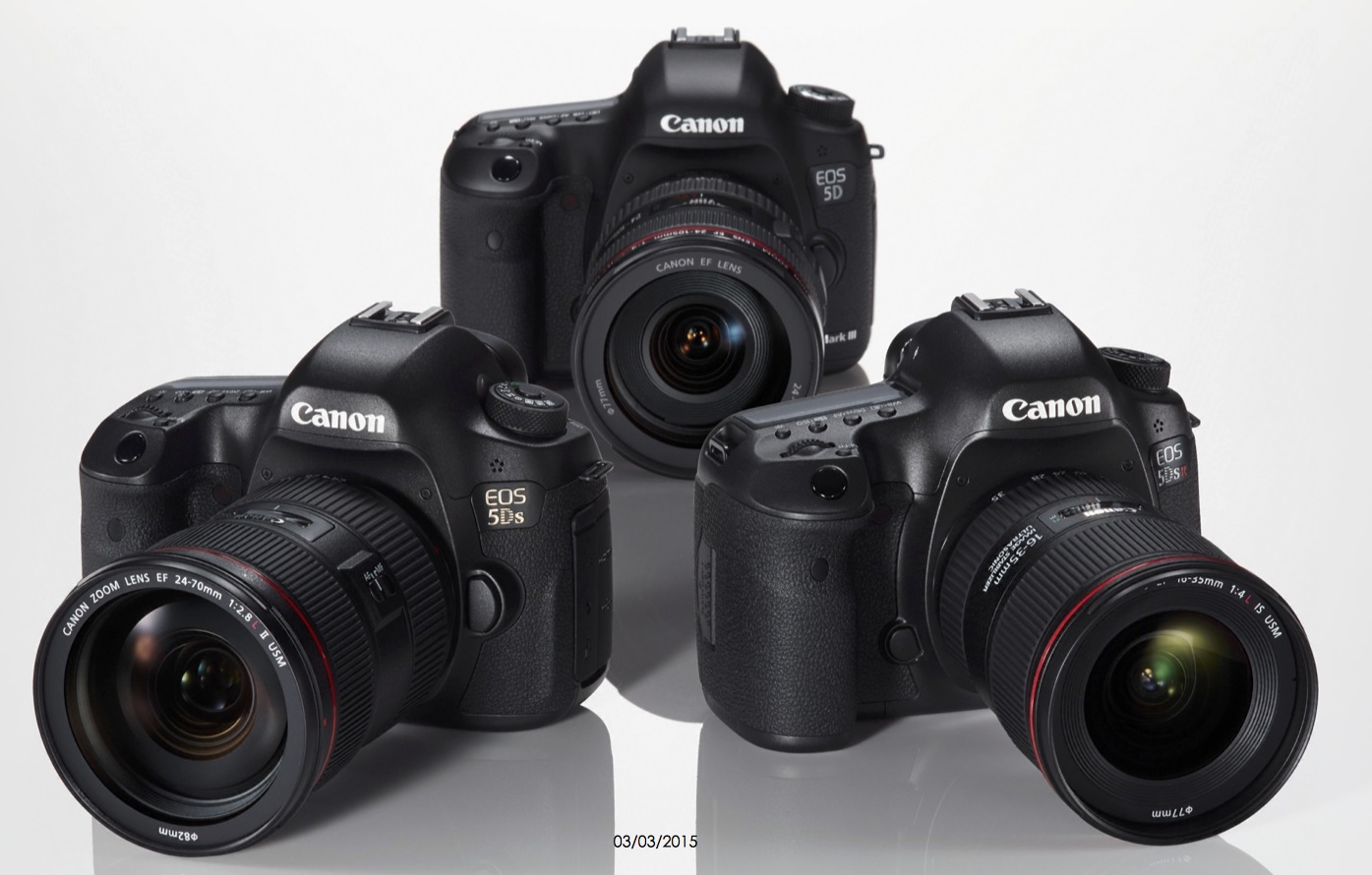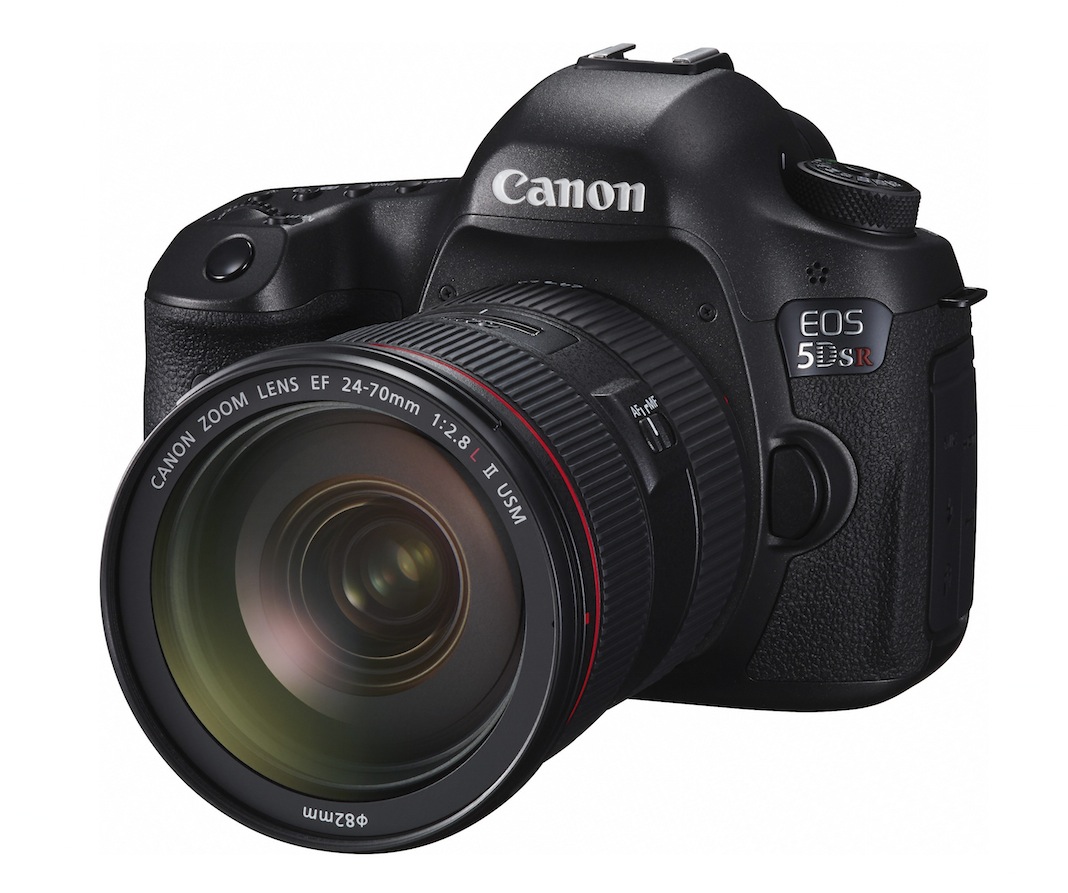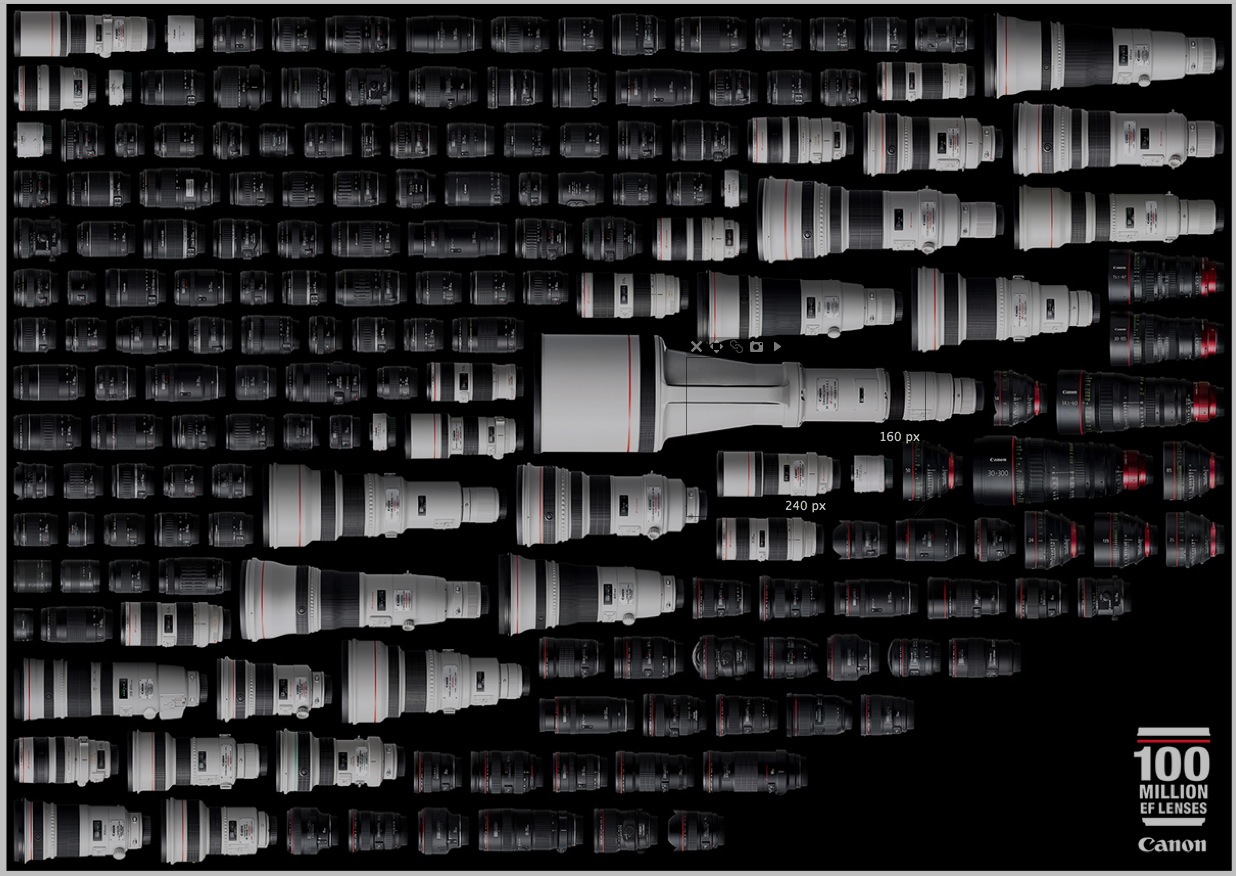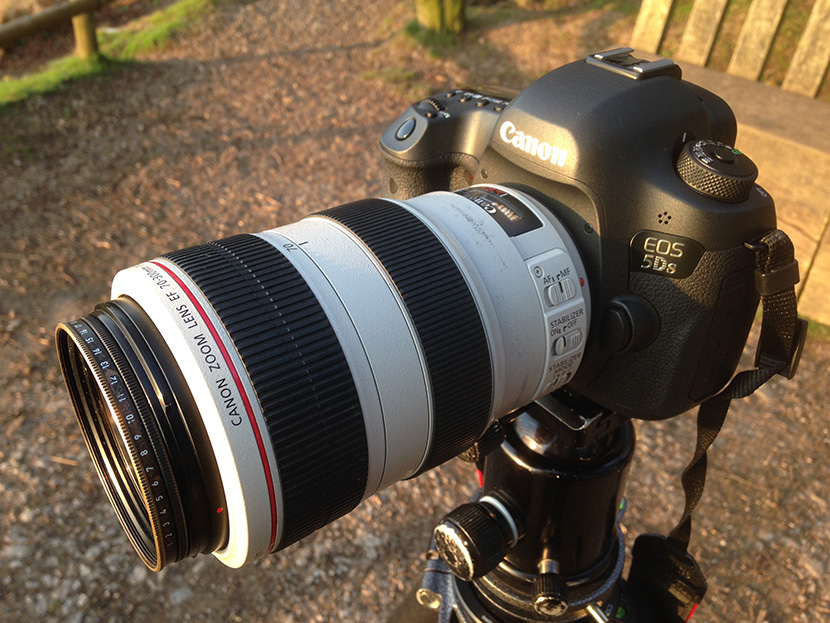Canon 5Ds / 5Dsr Preview

Canon 5Ds / 5Dsr Preview - Part One
Welcome to a preview on the Canon 5Ds and 5Dsr. I am currently in the middle of a series of twenty-five Canon Pro Imaging appearances so I have been fortunate enough to trial both the 5Ds and the 5Dsr over the past few weeks to build a collection of images for these shows. This has given me a chance to understand and evaluate the potential and technical intricacies of shooting and working with a 50mp camera and this has allowed me to think about the needs of photographers as a whole.
I must point out at this stage that these views are based on the use of beta models of both the 5Ds and the 5Dsr and not on the final production versions. So there may have been some changes to software, firmware and perhaps other aspects I am unaware of, as Canon move towards the final production model.
I have been using a beta version of Digital Photo Professional and now Lightroom to evaluate and convert images into Photoshop CC 2014, so again there are a few doubts about how the files are being handled and processed, but the results are really compelling.
In this first part I want to present an overview and also some points to consider when presented with any technological advancement. If you just want to cut to the chase or just simply haven’t got the time to read my article right now, here are some answers you are needing –
- Both models are a compliment to the 5D range, not a 5Dmk4
- It’s a brilliant camera capable of astounding resolution.
- Recent lenses are needed to release its full resolution capabilities.
- ISO performance is around 11stops possibly more.
- ISO will easily handle 1600, 3200 at a push, but it is not designed for this purpose
- The camera will improve your shooting technique tenfold.
- The camera requires a solid tripod and tripod head.
- Completely redesigned vibration controlled mirror.
- Completely redesigned base for vibration free shooting
- With modern IS lenses, the camera is very usable handheld.
- The new menus and firmware are the best ever.
- The viewfinder menus and overlays are the best ever.
- The 1.3x and 1.6x crop modes are very useful.
- In 1.6x crop mode the focus points cover most of the frame
- The crop modes are complimented by in-viewfinder overlays
- Both models very high transfer rate UHS-I cards
- Video mode is 1920HD, not 4k
- Fast computers with at least 16gb of RAM are needed.
- TIFF’s are nearly 300mb
- I fear for the world of medium format digital.
*** More technical information will unfold over the next few articles.***
Understandably I have watched opinions swing from ‘wow’ to ‘meh’, but sadly I think some photographers are reacting to click baiting blogs or simply enjoying waxing lyrical. From first hand experience I can conclude it’s a great camera, if you need a 50mp camera. I have had shot with both the 5Ds and 5Dsr beta models, but never both at the same time as they are in high demand among Canon, so I cannot compare one to the other just yet. I have decided to tackle a more observational and psychological approach for this first article, so read on and consider what I feel are important points when assessing this and other photographic advancements.

The Most Important Question
Ask yourself this question – why do I need a 50mp camera? It’s not an easy one to answer but these are areas to consider –
- Professional level landscape and travel imagery / reproduction
- Professional architecture and interior photography
- High end studio product work and reproduction
- Fashion and portraiture for large reproduction
- Stock photography and the ability to crop into imagery whilst retaining file sizes
- High quality printing needs for A2 and beyond
- Medium format size images with the versatility of a 35mm system
- Medium format size images with the equipment weight advantages of a 35mm system
- Medium format size images to compliment a 35mm 21mp system
- Or you love cameras and simply enjoy using the latest technology
The 5Dsr is going to appeal to landscape photographers in particular with its low pass cancelling sensor. It delivers remarkable fine detail from my initial testing.
The need to crop is always one that raises debate. When the 1Dx was launched, there was immense disappointment at the loss of the 1.3x crop. This the ‘extra reach’ continues on with the remarkable Canon 7Dmk2, so many wildlife and sports shooters are heralding this as their preferred camera in the field.
For me the full frame 6D and 1Dx is ideal, but things get tricky for me when cropping into images. Agencies require minimum file sizes and I will rarely crop into an image unless it’s slight and can be interpolated back out to the original size. To me this is one of the strongest aspects of the 5Ds/r. A large percentage of the image can be discarded and still retain 20mp+.
Subsequently shooting with the 1.6x crop yields a 20mp image, the size of my 6D. So this extends the capabilities of my 70-300mm to a 20mp 480mm at the 300mm end. Now that’s very useful and makes that lens in particular extremely versatile.

Lens Consideration
The most appealing factor to those requiring a 50mp camera, something that has only been present in medium format, is the array of Canon lenses. There are an amazing 72 lenses in the Canon line up, from game changing wide angles like the 16-35f4L IS, the razor sharp 24-70f2.8L mk2 and 24-70f4L IS as well as the 17mm TSE and 24mm TSE mk2 lens. The 70-200 range and beyond have always been stellar performers so literally all the high end glass will cope admirably with this high resolution camera.
If you own a set of significantly older optics, they will not fully resolve the detail the camera is capable of, so I advise you to consider this carefully. I was using the 11-24 f4L, 16-35f4L IS, 24-70f2.8L and the 70-300f4-5.6L – all were very capable of producing remarkable results from the both the 5Ds and 5Dsr.
So why create a 50mp camera?
The point of manufacturing any camera is to sell cameras and expand creativity, which in effect sells cameras. There is an identified market for large mega pixel cameras that has been around since medium format digital became a reality and Canon are satisfying that market in a smaller 35mm body, by creating a 50mp camera. Just like car companies, that make a wide range of models, from family life to the exotic, they may or may not be suitable for you. Cameras cannot satisfy every pursuit, but they can include features that we can adapt to our chosen photographic endeavours.
As with all forward steps in technology, manufacturers expand our creativity with their advances and you can use these in the most surprising of ways. I remember the door that the humble 5Dmk1 opened for me in 2006. Alongside superb image quality came a true ‘halleluiah’ moment, as I waved goodbye to three troublesome years of film photography and aimed my thoughts towards the stars. I was able to photograph at night for the first time, under moonlight on Dartmoor and this became a revelation. Looking back, I am not exactly certain that Japanese engineers thought at the time of camera’s conception, that there would be such a movement towards the world of night photography, but the next generation of cameras were very capable and the genre exploded in popularity.
In 2008 the 5Dmk2, with similar megapixels to the 1Ds3, gave better signal to noise ratio and included 1920HD video, a total revelation. Have I shot much video? Not at all, but it opened the door to an entire world of DSLR cinematography and paved the way for all manufacturers to offer video on their camera systems. I am not certain I would ever buy a DSLR on its video capabilities, but there are others who view this as utterly crucial.

In the landscape in early March - the 70-300f4L IS, despite being a few years old in design, is part of a line of lenses that resolve a 50mp sensor.
Landscape Photography and the Market Place
Despite thinking otherwise, landscape photography is not a primary force but a subcategory that comes under the wider umbrella of ‘outdoor photography’. Just like wildlife, it comes under the genre of ‘action photography’ – think motor sports, press photography etc. Outdoor photography encompasses those who enthusiastically travel and photograph the outdoor world with a camera. Nevertheless, it remains an important consumer sector with camera features that cross over into other photographic genres. In the eyes of a camera manufacturer, landscape photographers are highly important, but like all genres never appear to be the absolute focus for a specific camera model. It is us who must learn adapt and this runs true when creating a 50mp camera.
My purchase of the Canon 1Dx iin late 2012 exemplifies this further. Its primary market was as a professional body for high speed action photography - wildlife, sports, journalism and more. It was also designed to continue shooting in the most inhospitable of conditions and temperatures. Landscape photographers subsequently use this camera too, but it’s nowhere near as popular as it’s primary reason for its manufacture. Think winter sports, low light grand prix and then there is me, crawling around in the arctic at night on a frozen lake trying to focus stack aurora – I am not sure anyone in Canon Japan initially thought it would be used in such a way, but I will reiterate by reinforcing that cameras are created to satisfy a market and expand creativity and thats exactly what this camera did for me. What we all do is adapt a camera to suit our needs.
Some First Conclusions
The issues surrounding camera technique will become all too apparent for those not used to working with tripods. Yet all this additional detail could actually do the reverse, creating better skills, extended technique and greater scrutiny of the way a photographer works in the field. I am certain those who shoot medium format digital or large format film will know exactly what I am talking about. I am certain this makes photographers more methodical about their technique, not run away, or downsize to 35mm again.
Yet saying this, as with most cameras that reach beyond 30mp, the price is not always photographic. The lack of computing power will generate a significant problem for those will less than 16gb or a quad core processor. I am using a 2.4ghz Macbook Pro for my 6D / 1Dx files, my main office PC is similar, a 6core 16gb, both with SSD’s. Suddenly you will be dealing with 16bit TIFFs that are 287mb instead of 120mb, so processing images with multiple layers will put considerable strain on older machines indeed.
The biggest unanswered question I have is regarding the market of medium format digital. As digital 35mm marches fearlessly into this once exclusive territory, I do fear for the market. Spending £20000+ on a 50mp back, 645 body and 80mm lens is unthinkable, even for most professionals I know, so this camera is marching right up to the door. Then again I wonder if this and any other 35mm 50mp+ sensor developments will have any effect on turnover at all. Companies like Phase One and Hasselblad and even Leica have always attract an exclusive clientele interested in impeccable build, image quality, lenses and resolution. From a landscape perspective, devoid of MF film or digital, here’s why medium format photography holds restrictions that a 35mm system overcomes -
Outside of the obvious weight and bulk and devoid of an unnecessary financial comparison, moving up from 35mm photography to MF digital means an immediate loss of depth of field. An 80mm MF lens (equivalent of 50mm coverage in 35mm terms) at f13-f16 is the same as a 50mm at f8, so if your photographic vision is engrained in 35mm, foreground based and dynamic, then a medium format camera, film or digital, could be heading in completely the wrong direction. You’ll be needing a technical camera, or tilt adapters to overcome this problem, or feel comfortable with focus stack pictures again and again. Multiply this with incredible resolution, exciting but unforgiving, and a dynamic landscape photography perspective is getting very tricky to capture indeed.
If you need a 35mm system with extensive resolution, the 5Ds/r cameras is looking really attractive. There’s a lot more to uncover yet, but with access to such a huge array of lenses, many of them being world class, the 5Ds/r is looking like a remarkable achievement, if you need a 50mp camera that is.
